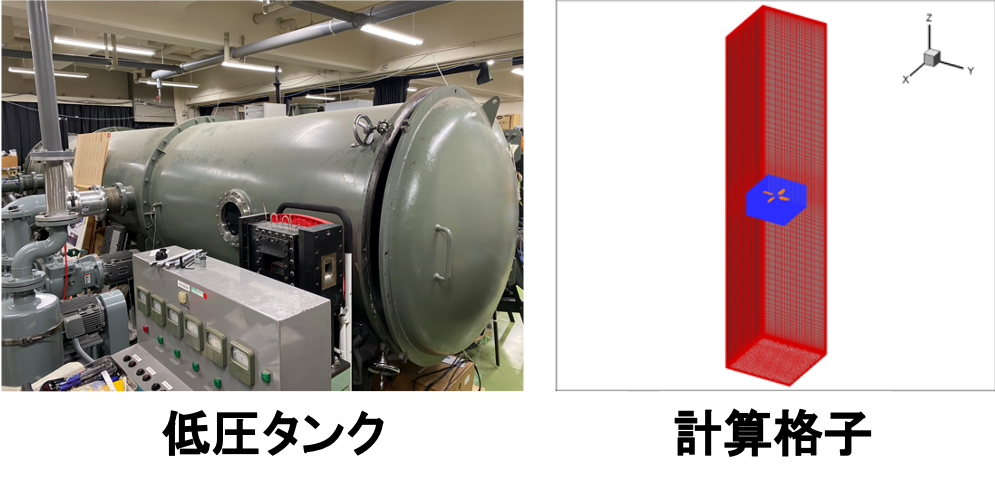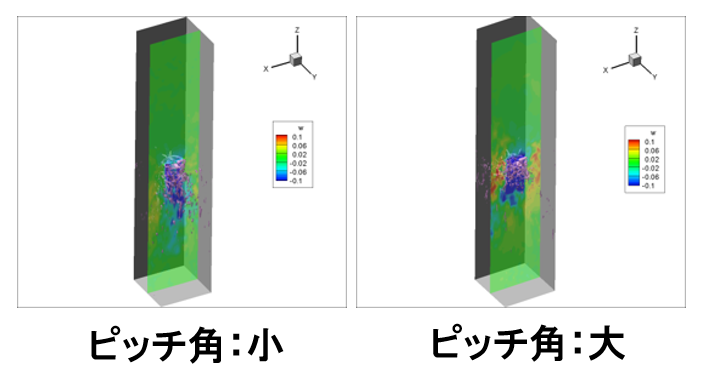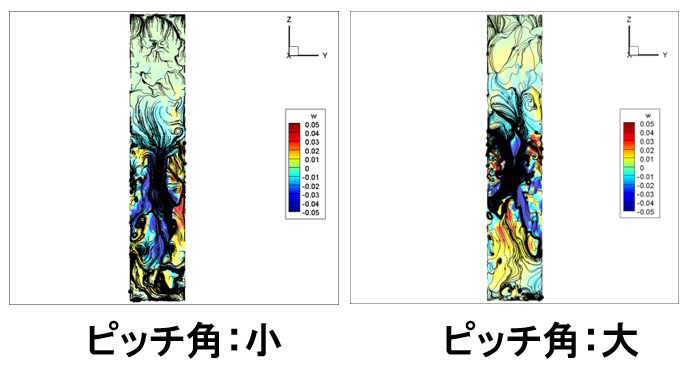Mars helicopter configuration and aerodynamical optimized blade
JAXA Supercomputer System Annual Report February 2021-January 2022
Report Number: R21ECMP13
Subject Category: Competitive Funding
- Responsible Representative: Yoshikazu Makino, Aeronautical Technology Directorate, Aviation Systems Research Unit
- Contact Information: Keita Kimura, JAXA(kimura.keita@jaxa.jp)
- Members: Yuta Buto, Keita Kimura, Masahiko Sugiura, Hideaki Sugawara, Kuniyuki Takekawa, Yasutada Tanabe, Kouta Yoshikawa
Abstract
A Mars helicopter "HAMILTON" has been developed by JAXA, Tokyo Metropolitan University and Kogakuin University. Since the atomospheric density on Mars is about 1/100, the sound of speed is about 3/4 compared with those on Earth, we need to develop the high perfmance heli-rotar. In ISAS/JAXA, the experimental measurements of the heli-rotar performance at Martian condition have been conducted using a low pressure tank. However, since this experiment is conducted in a tank, the measurement is always affected by the closed space. The purpose of this study is to clarify how the flow field and aerodynamic characteristics around the rotor are affected by the closed space. Based on the knowledge of this simulation, we will conduct the experiment and simulation on the optimization of the blade shape and configurations.
Reference URL
N/A
Reasons and benefits of using JAXA Supercomputer System
We need to conduct the large-scale simulations on the rotational wing flow using "rFlow3D", which has been developed in JAXA.
Achievements of the Year
As we conduct the experiments using a low-pressure tank, which simulates the Martian atmospheric environment, the numerical simulation on the Mars-heli rotor in the closed space has been conducted to investigate the closed space's effects on the flow fields and rotor performances. The computational object is the single rotor of "HAMILTON"[1], and the pitch angle is changed as the parameter (10 deg.-26 deg.). The effect of the closed space on the rotor is evaluated at each pitch angle. The numerical analysis solver used was rFlow3D developed by JAXA.
Figure 1 shows the low-pressure tank used in the experiment and the computational grid used in the simulation. As a result of the open and closed cases, as the pitch angle increases, the effect of the closed space becomes more significant and the difference from the open space result becomes larger.
Figure 2 visualizes the flow field for the low angle and large angle cases. For the case of a low angle, a clean downwash under the rotor can be observed. On the other hand, in the case of a large angle, the flow separation makes the flow field complicated and the effect of the closed space can be observed near the wall.
Figure 3 depicts streamlines in cross-sections at a low angle and large angle. For the case of a low angle, the downwash extends to the bottom of a tank. On the other hand, for the case of a large angle, the downwash is relatively weak compared to that of the low angle case and does not extend to the bott. In especial, the circulation flow region is generated around the rotor, decreasing aerodynamic performances.
Publications
N/A
Usage of JSS
Computational Information
- Process Parallelization Methods: N/A
- Thread Parallelization Methods: OpenMP
- Number of Processes: 1
- Elapsed Time per Case: 1920 Hour(s)
JSS3 Resources Used
Fraction of Usage in Total Resources*1(%): 0.33
Details
Please refer to System Configuration of JSS3 for the system configuration and major specifications of JSS3.
| System Name | CPU Resources Used(Core x Hours) | Fraction of Usage*2(%) |
|---|---|---|
| TOKI-SORA | 1975694.63 | 0.10 |
| TOKI-ST | 1586335.56 | 1.95 |
| TOKI-GP | 0.00 | 0.00 |
| TOKI-XM | 0.00 | 0.00 |
| TOKI-LM | 0.00 | 0.00 |
| TOKI-TST | 126150.55 | 2.65 |
| TOKI-TGP | 0.00 | 0.00 |
| TOKI-TLM | 0.00 | 0.00 |
| File System Name | Storage Assigned(GiB) | Fraction of Usage*2(%) |
|---|---|---|
| /home | 1547.81 | 1.54 |
| /data and /data2 | 53247.23 | 0.57 |
| /ssd | 1718.94 | 0.44 |
| Archiver Name | Storage Used(TiB) | Fraction of Usage*2(%) |
|---|---|---|
| J-SPACE | 9.18 | 0.06 |
*1: Fraction of Usage in Total Resources: Weighted average of three resource types (Computing, File System, and Archiver).
*2: Fraction of Usage:Percentage of usage relative to each resource used in one year.
ISV Software Licenses Used
| ISV Software Licenses Used(Hours) | Fraction of Usage*2(%) | |
|---|---|---|
| ISV Software Licenses(Total) | 3118.88 | 2.18 |
*2: Fraction of Usage:Percentage of usage relative to each resource used in one year.
JAXA Supercomputer System Annual Report February 2021-January 2022





